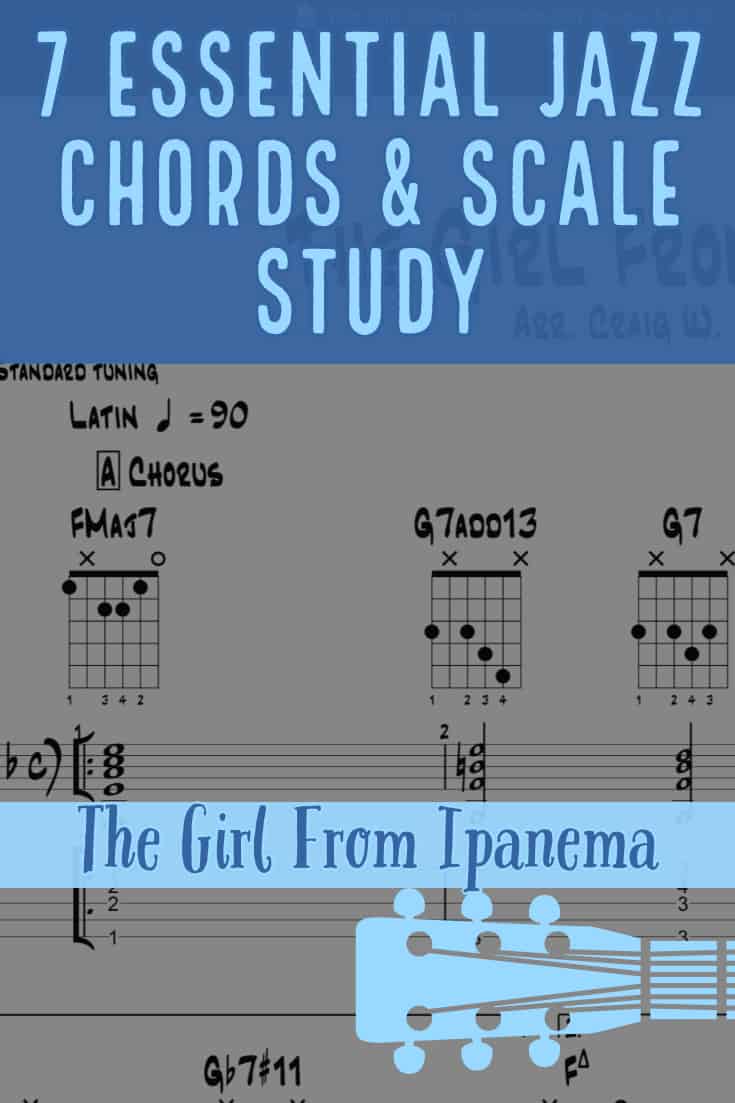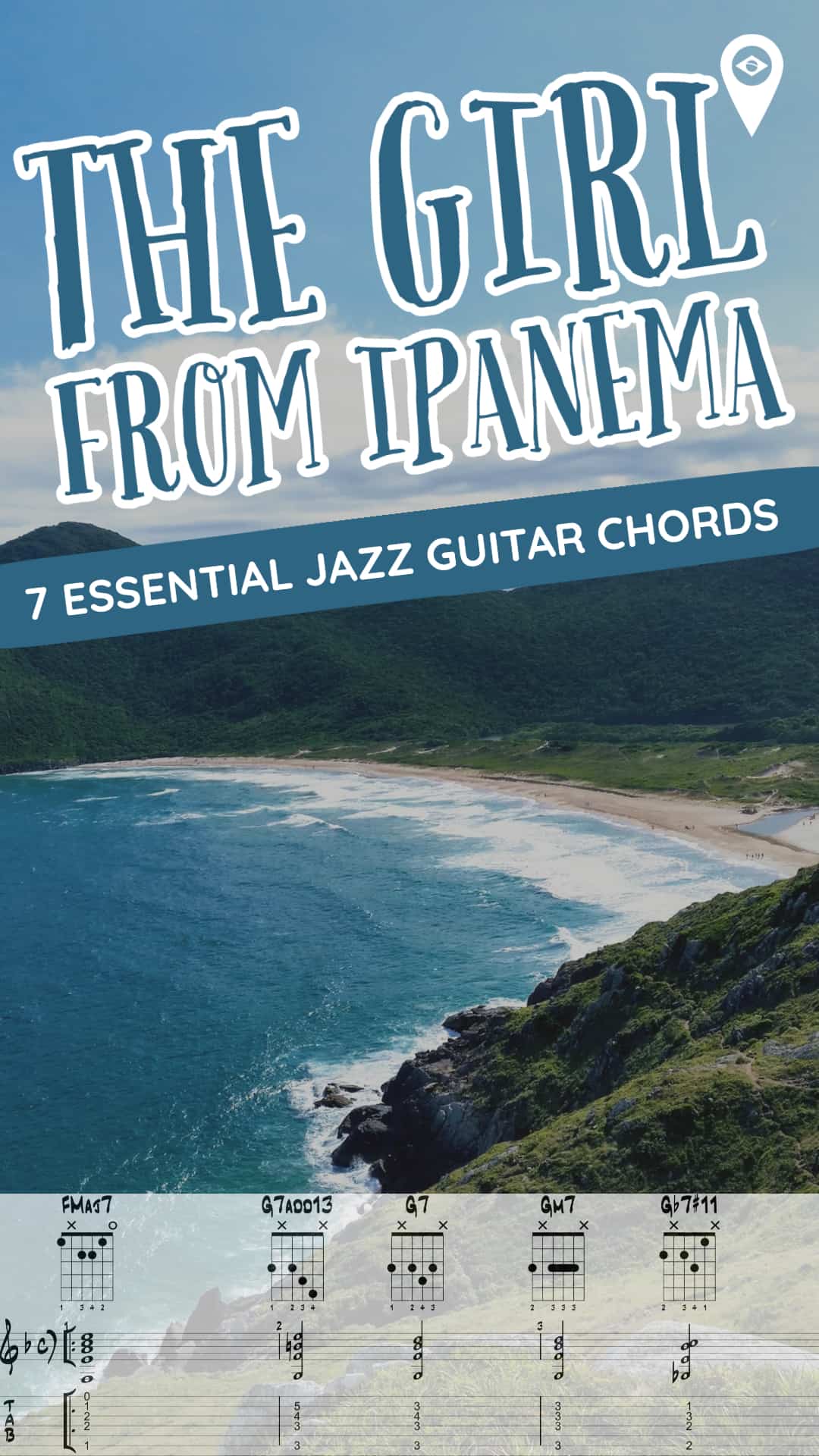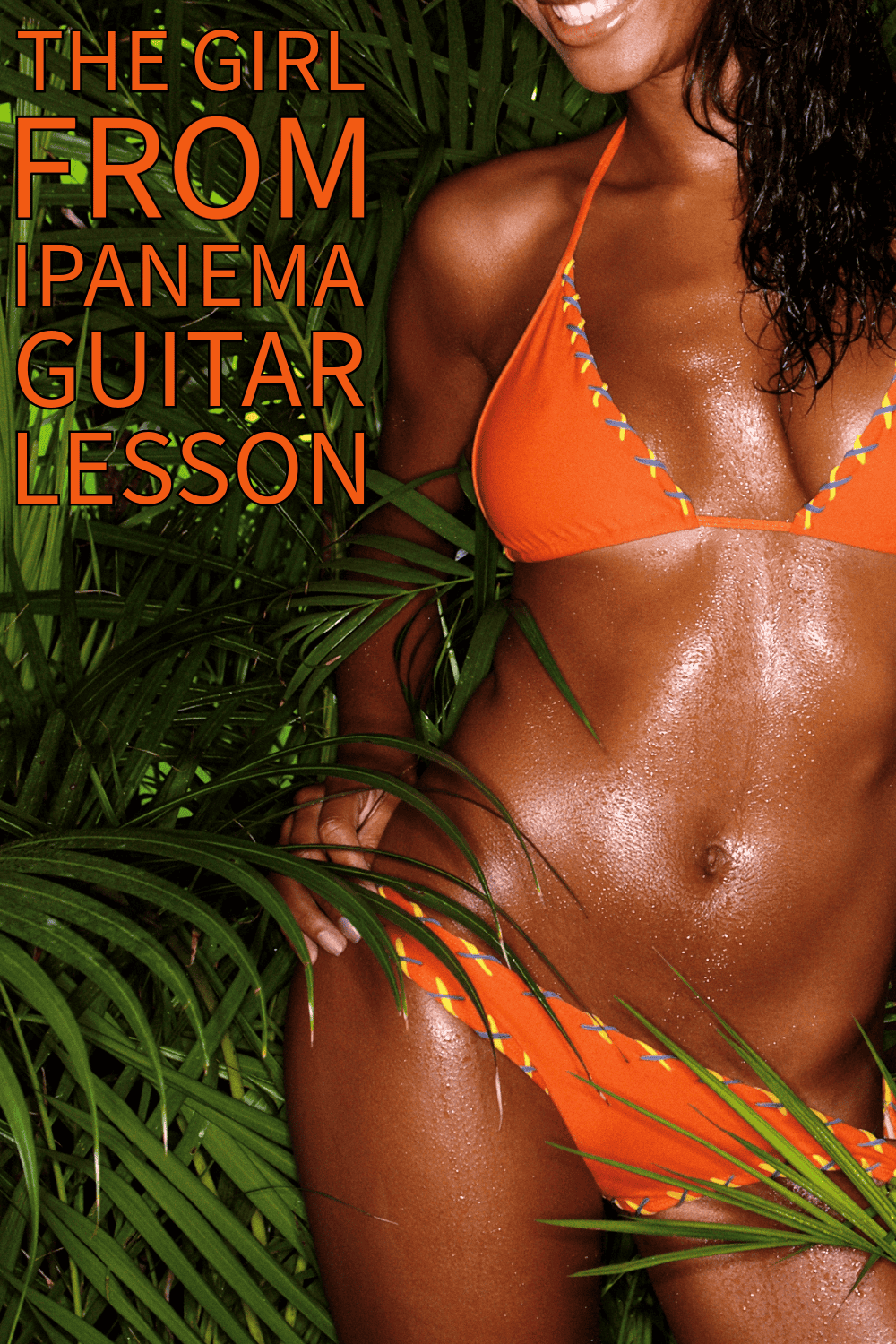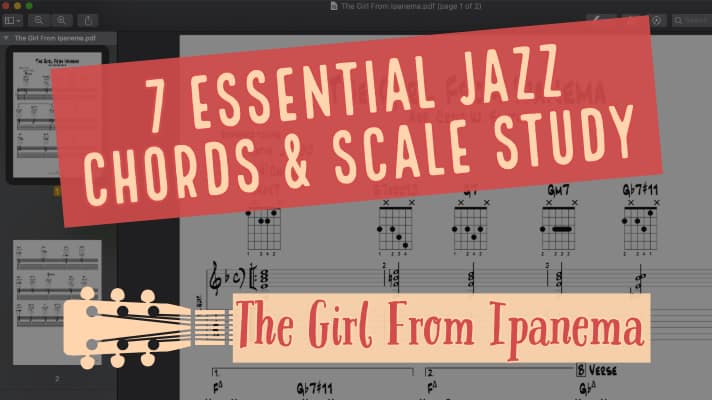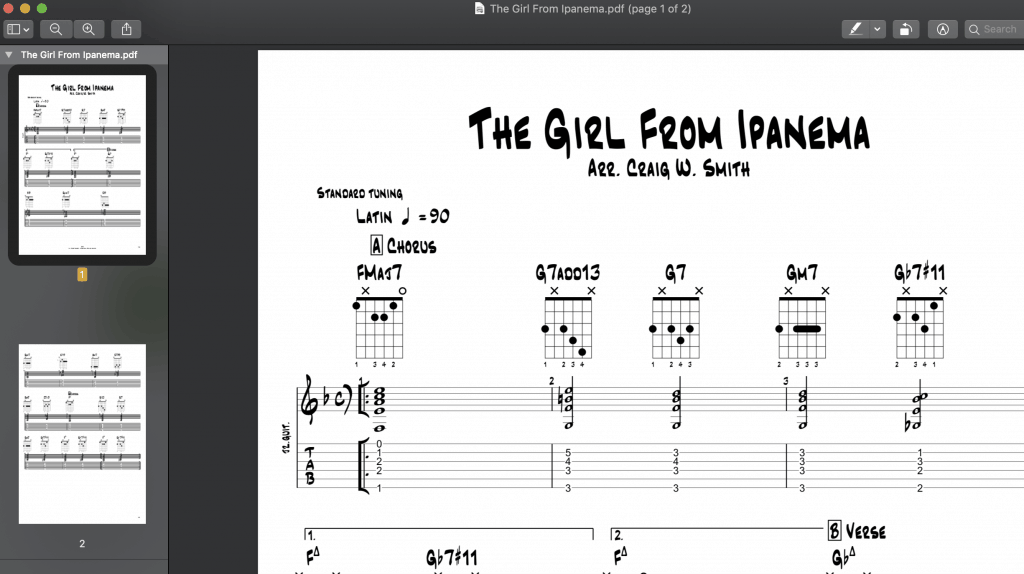The Girl From Ipanema Guitar Lesson and Guitar Jazz Chord Study
An analysis, lesson and study of a really classic Jazz / Pop tune, The Girl From Ipanema.
In this Guitar lesson:
- Girl From Ipanema Chord Chart
- Chord Analysis Section A
- Chord Analysis Section B
- Soloing and Improvisation Ideas – The Essential Scales
- Practice Backing Track\
Girl From Ipanema Guitar History
Every once in a while I need to write a lesson for myself as well as for my readers and students. Whenever I’m forced to play anything on the guitar outside of my comfort zone, I do my best to research and learn any new techniques I may need to get it under my fingers as quickly and painlessly as possible.

I’m not a Jazz guitar player, but I play some Jazz. Make no mistake, there is a difference. I was bred a rock, metal and later classical guy. I love to improvise and its a huge part of what I do performance-wise at all of my gigs, but I often lack the “jazz” vocabulary required to sound convincing in the genre.
Thats where the research and study comes in. So why put myself (or yourself) through it? Obviously, anything you can add to your guitarist toolbox is good for you but there are other reasons as well.
Why Learn The Girl From Ipanema Guitar Parts?
- Learning new techniques that enhance what you’re already good at.
- Adding new chords, scales, arpeggios associated with them can only make you a better musician and guitarist.
- Learning an uncomfortable song or piece for your band or musical group.
- Increasing your overall guitar and music vocabulary.
Lets face it.. no matter what kind of band you’re in, whether its a beginning garage band or corporate pop band doing 300+ shows a year, at some point you will be forced to play something your either don’t like; or is outside of your comfort zone on the instrument.
A few weeks ago the singer from my acoustic duo asked me about adding some Jazz standards and more lounge type music that she thought would be good for us getting more corporate and resort type gigs.
We do just over 200 gigs a year now, but why not add some music that makes us more diverse and prepared for different types of venues and of course… this stuff is just fun to play.
As a guitar lesson, you’re getting what most would agree to be 7 really essential and useful chord shapes that you may not have come across or used in other types of guitar music. Chances are, if you can play through the chords in The Girl From Ipanema, you could tackle 90% of the standards out there. So let’s get started!
Jazz Fake Books
If you’re wanting to expand your chord volcabulary and work on many different Jazz standards and progressions, get a fake book or Real Book. When I started playing guitar, these things were super expensive and hard to find. Nowadays, they’re cheap and available just about everywhere. This is the one I use that’s available on Amazon. It’s a steal and should be a part of every guitarists library.
The Girl From Ipanema Chord Chart
If you already have a Real Book, turn to page 158 and grab the chart. I’ve included my own version here if you don’t.
At a glance, I thought to myself… hey, no problem. There’s not a chord on here I don’t know and I can just put a little Bossa nova feel to it and we’re good to go.
If you’re not familiar with these chords or like many guitarists, perhaps uncomfortable with switching between them, let’s grab some shapes in the first section and put it together.
Girl From Ipanema Guitar – A Section

Let’s focus just on clean strums and transitioning smoothly into each chord form. Don’t worry about the rhythm yet.
Now, if you’ve ever read or studied some jazz guitar lessons you’ve probably heard different opinions on chord voicings that are suitable or supposedly the best for jazz guitar accompaniment.
- I’ve read you should never put the root in the bass.
- Stay away from the melody in the voicings.
- Don’t use the low A and E strings.
Are The Girl From Ipanema Guitar Parts Hard?
Well, I’m here to tell you it doesn’t need to be that complicated. Maybe if you’re in a quartet with a Pianist, sure. I can see the benefit. If you’re just a guitarist like me providing the only rhythmic and melodic accompaniment, trust me, you’ll want to use the beefiest chords available with the root notes in the bass.
Let’s take a look at the first 4 chords of The Girl From Ipanema:
- F Major 7
- G7 or G13 (We could also call it an “add13”)
- Gm7
- Gb7#11
The Girl From Ipanema Guitar Chord Analysis
F Major 7
This one is pretty self-explanatory. It’s the I chord in the Key of F Major:
F G A Bb C D E F
G7 or G13
We could think of the G7 as a Secondary Dominant. Think of it as the V chord of C, which is the 5th of F.
A secondary dominant is a dominant 7 chord built from another note or chord tone (5th) of the root (F). Sound confusing? Let’s break it down even further:
G
A
Bb
C is the 5th
D
E
F
Take the 5th (C) and build a C scale:
C
D
E
F
G is the 5th (dominant 7) of C
A
B
C
So, that’s how we get G7 as a secondary dominant.
Secondary Dominants
Gm7
The Gm7 that follows goes back into the key of F as the ii chord. Remember that the 2nd chord in every key is minor or minor 7.
Gb7#11
A chromatic transitioning chord that connects the Gm7 back down to the F Major7.
It acts as a substitute for the V chord (C7) in the Key of F.
This chord is really what gives this part of the song it’s unique flavor and color. It’s also just a really cool chord and one that can be used to connect non-diatonic notes to other chords in a key.
At the end of the A section there is a repeat and the second time through you’ll just hang on the F Maj7 for a full bar before moving into the B section. (Note: A triangle is often used in Jazz charts to indicate a Major 7th chord)
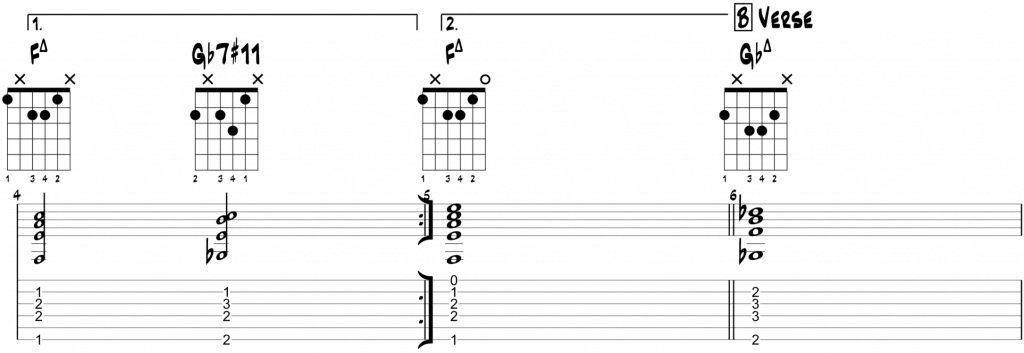
The Girl From Ipanema Guitar B Section
This is where it gets a little weird, especially if you’re new to Jazz tunes. Let’s take a look at the first chunk of chords.
- GbMaj7
- B9
I think of this as a modulation up a half-step to Gb/F#. Then up a 4th to the B9.
- Gbm7
- D9
Switching the Gb to a m7 is unexpected, but it works!
I think of the D9 as up a minor 6th from Gb.

- Gm7
- E9
An identical modulation up a half-step and then up a minor 6th from G to E9.

The last set of chords also follows a pattern:
- Am7 up a 4th to D7b9
- Drop a whole step to Gm7 up a 4th to C7b9
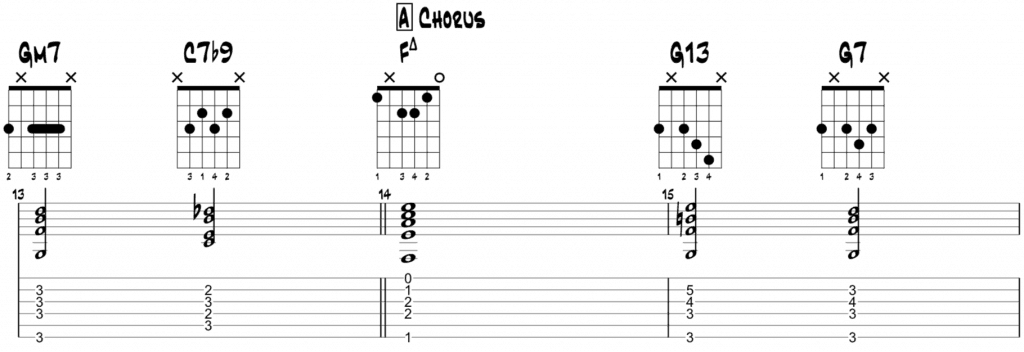
Then you go back to Section A (Chorus) and repeat!
That’s it. Not too bad when you break it down right?
Tips For Practicing The Girl From Ipanema Guitar Tutorial
- Learn all 7 chord forms.
- Slowly strum and switch through the chart.
- Make slow deliberate left hand movements.
- Once you feel comfortable, set your metronome to 90 bpm and try it up to speed.
Want a high quality .PDF of this lesson including audio and Guitar Pro Files?
Jump on the email list to access this free lesson and get access to the Guitar Printables Area.
Soloing Ideas for The Girl From Ipanema
Once you get a handle on switching through the chords in The Girl From Ipanema, try soling over the changes. It’s a real challenge and a lot of fun for guitarists of any skill level. Armed with some handy scale patterns (below) and a backing track or looper, try to improvise over the chord changes.
For the purposes of this lesson, I’m just going to use scales for the examples. Don’t forget, you can also use any arpeggios that lie within the scales as well. If you’d like to check out some arpeggio shapes, check out my free arpeggio lesson.
Section A
- Chord – F Maj7
- Scale – F Ionian
Let’s not overthink things too much here. The obvious choice is just to stick to the key of F as much as possible.
Remember: Any of the Modes in F Major will work over a lot of this section.
Note: The chord tones of the F Maj7 chord outlined in red.
Girl From Ipanema Guitar Scales
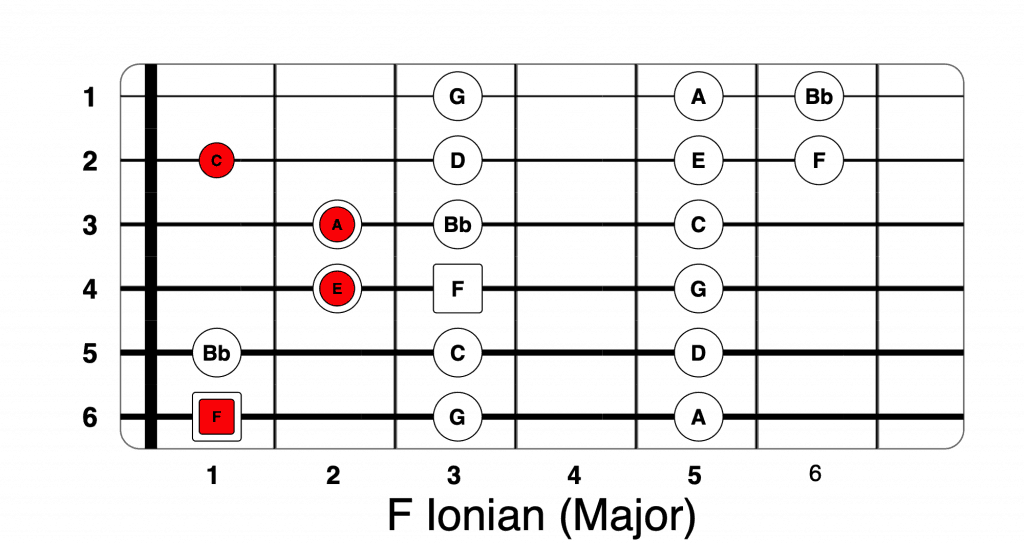
Don’t forget, you can play these scales all over the neck. This is just one possible position. If you’re new to modes, check out my modal lesson that includes all 7 guitar mode shapes.
G13 – G7
If you’ve read my previous lesson on chord formulas you may remember that a 13 chord is just a dominant 7th with a few extra scale tones added, the 7th, 9th, 11th and 13th. Since we only have 6 strings on the guitar, it’s technically impossible to play a true Dom13 chord… that’s ok, the G13 (aka G7add13) shape in the chart above is a pretty standard guitar substitution and sounds great.
The obvious choice here for soloing is to play G Mixolydian:
G A B C D E F G
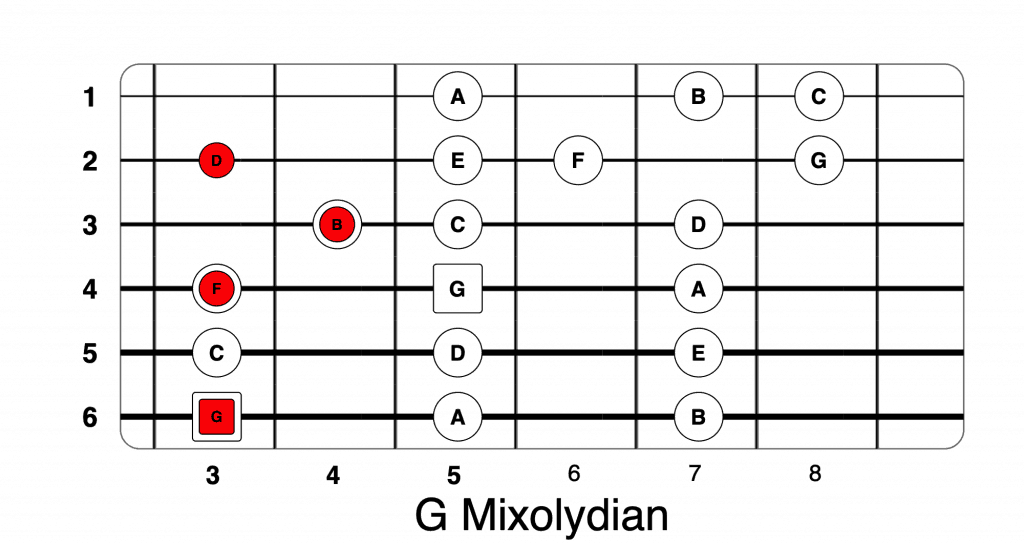
G Mixolydian is the 5th mode of C. It’s also only one note away from the Key of F. The conflicting note is the B-Bb. No problem!
You could use both B and Bb in the scale to get a sort of #9 sound as long as you leave the B in there since it’s an important note (the Major 3rd) of the G13 chord.
Lydian Dominant Scale
Another cool choice for playing over this chord is the G Lydian Dominant Scale. A.K.A., the 4th mode of the D Melodic Minor Scale.
Check out my Melodic Minor Scale Guitar Lesson if you’re not yet familiar with this scale or want to check out all of the modes in the melodic minor scale.
With G Lydian Dominant, we’re adding a #4 (b5) which gives us a cool jazzy sound for our solo.
Let’s take a look at D Melodic minor and it’s relation to the notes in a G7 chord:
- D – 5th
- E – 6th or 13th
- F – Major 3rd
- G – Root (Lydian Dominant)
- A – 2nd or 9th
- B – Major 3rd
- C# – #4 (#11) or b5.
- D
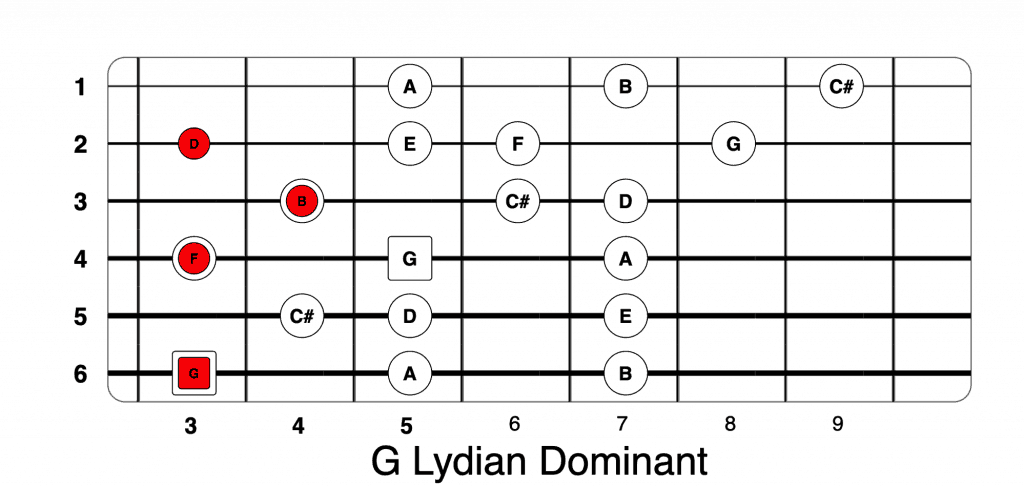
Gm7
Remember earlier when I said the Gm7 is simply the ii chord in F Major? Here we can go right back into the F scale or more specifically the second mode, G dorian.
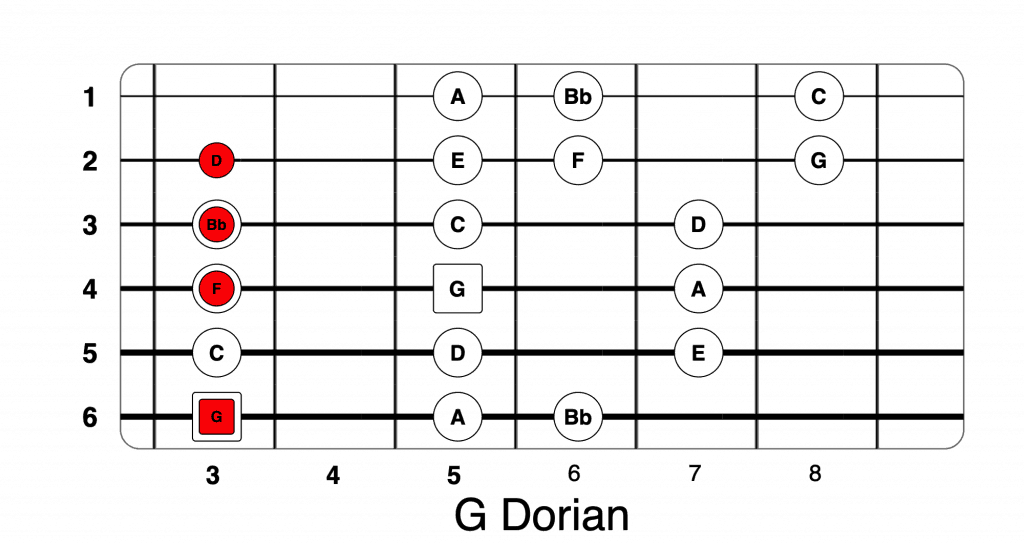
Gb7#11
Yeah, this is the tricky part of improvising over the A section. Let’s stick to our Lydian Dominant, this time with the root on Gb or C# Melodic Minor.
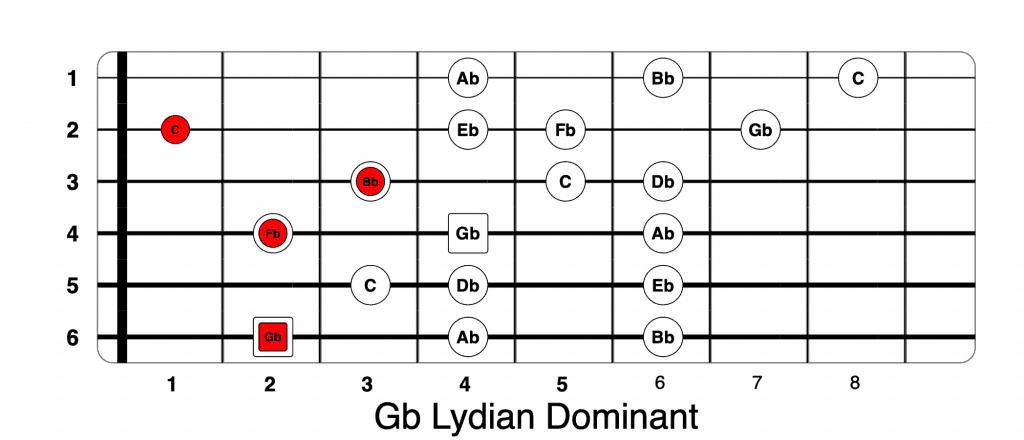
Improvising over the B Section
Here, we can reuse some ideas from before. Using a combination of diatonic modes over the Maj7 and m7 chords and Lydian Dominant over the Dom9 chords.
- GbMaj7 = Scale –Gb Major (1-2-3-4-5-6-7)
- B9 = Scale – B Lydian Dominant (1-2-3-#4-5-6-b7)
- Gbm7 = Scale – Gb Dorian (1-2-b3-4-5-6-b7)
- D9 = Scale – D Lydian Dominant (1-2-3-#4-5-6-b7)
- Gm7 = Scale – G Dorian (1-2-b3-4-5-6-b7)
- Eb9 = Scale – Eb Lydian Dominant (1-2-3-#4-5-6-b7)
- Am7 = Scale – A Dorian (1-2-b3-4-5-6-b7)
- Gm7 = Scale – G Dorian (1-2-b3-4-5-6-b7)
Half-Whole Diminished Scale
Our lone rebel scale in the B section is the Half-Whole diminished scale, which fits perfectly over the 7b9 chords here.
D7b9 = Scale – D Half -Whole Diminished (1-b2-b3-3-#4-5-6-b7)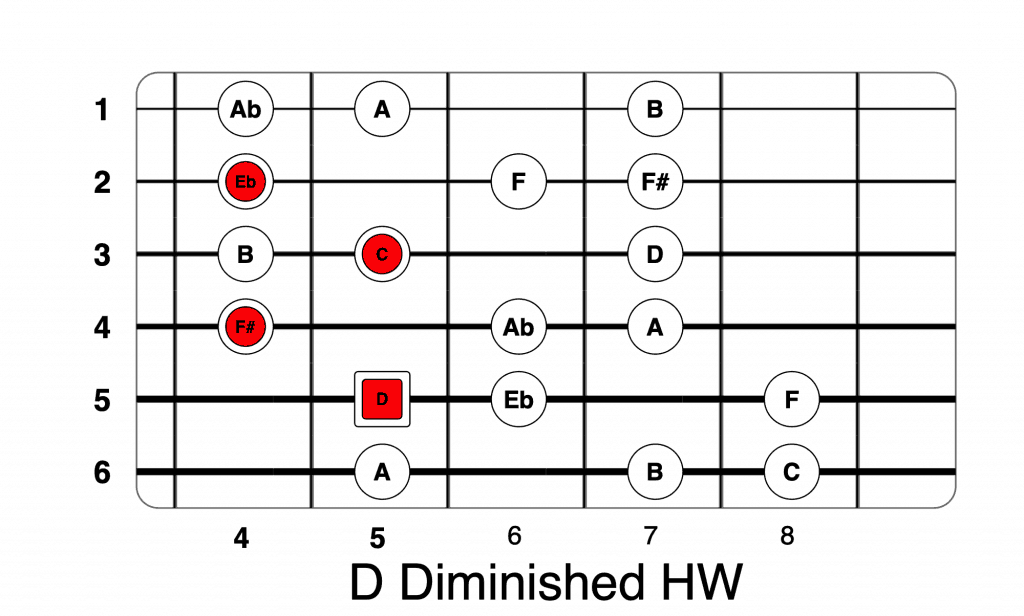
C7b9 = Scale – C Half -Whole Diminished (1-b2-b3-3-#4-5-6-b7)
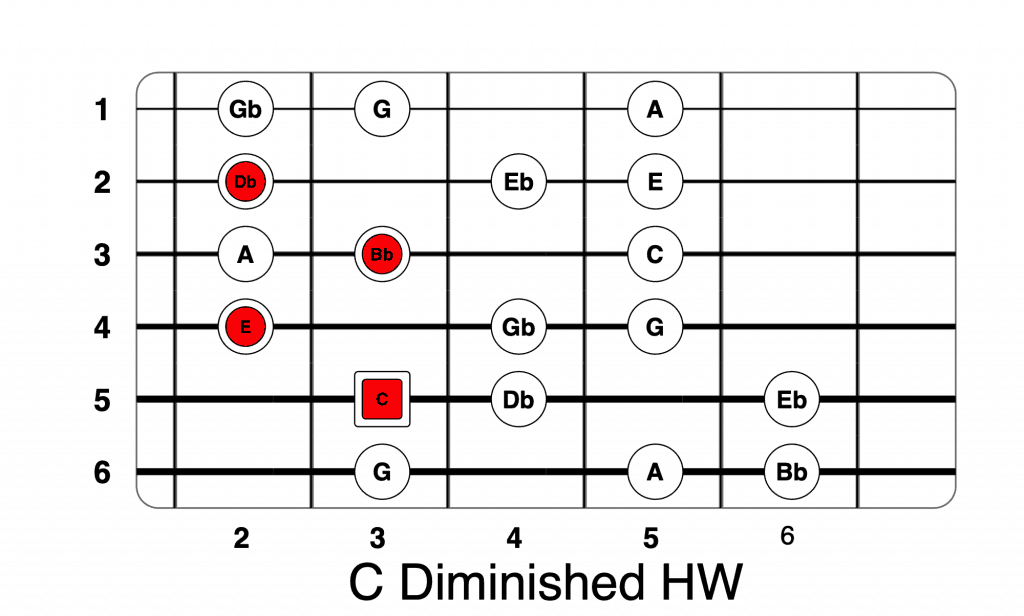
Girl From Ipanema Guitar Backing Track
Here’s a great backing track you can use to try these ideas for improvising as well as practice your chord switching and rhythm timing. The chords in this track are slightly different than my arrangement but all of the concepts above will work fine with it. Happy practicing!
Craig Smith is a professional Guitarist, Teacher, and Writer living in Sanford, Florida. Craig has taught guitar lessons, performed 200+ gigs per year for nearly 30 years, and published 4 guitar instructional books. When he’s not gigging or writing, you may find him by the pool with his wife Celeste, 4 Chihuahuas, and a drink. 🎸
